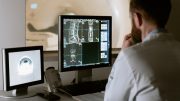Alder Hey Children’s Hospital NHS Foundation Trust is working with connected healthcare specialist Wellbeing Software to eradicate paper based processes by implementing digitised patient health records across the Trust.
Alder Hey is implementing the Stratus platform, to scan and replace paper records, making them available alongside other sources of integrated clinical data via the intuitive clinician’s interface. The solution is fully interoperable with the trust’s strategic EPR system, providing clinicians with visibility of the complete patient record, wherever they may be.
Chris Yeowart, Director of Wellbeing Software said: “Alder Hey is an incredibly progressive organisation, dedicated to using technology to make improvements that will ultimately enhance service delivery and clinical outcomes for the benefit of patients. As the trust’s long term radiology information system supplier, we’re proud to extend our partnership to help them to create comprehensive, paperless, patient records.”
In order to support Alder Hey’s paperless journey, the trust is also implementing Wellbeing’s eConsent solution to manage the compulsory parental consent process associated with all surgical procedures. The creation of additional bespoke electronic forms is also a feature of the project, and will be available to view via the Stratus interface along with information from other integrated services such as medical imaging and pathology.
Alder Hey is part of a handpicked group of hospital trusts chosen by NHS England to drive new ways of using digital technology in the NHS. As a Global Digital Exemplar and the only children’s NHS trust to be selected, it is one of the most digitally advanced hospitals in the UK. As part of their drive for cross-organisational collaboration, they are working with other neighbouring trusts to develop a shared care record across the Cheshire and Merseyside region.
Besides enabling an individual care provider to create a complete view of patient records, Stratus can be employed to present organisationally disparate patient records, in a single view, and is therefore perfectly placed to support this emerging initiative.





